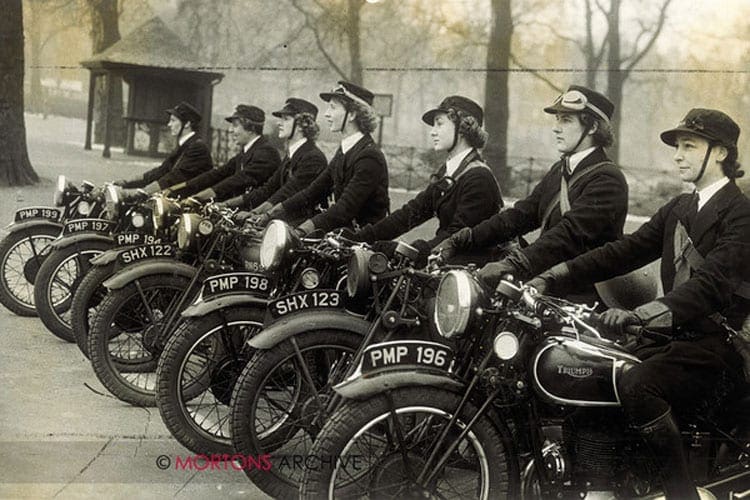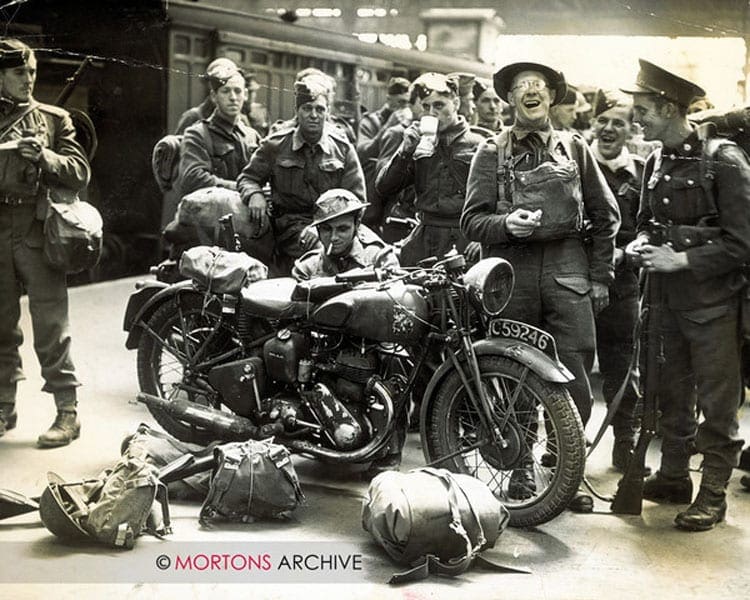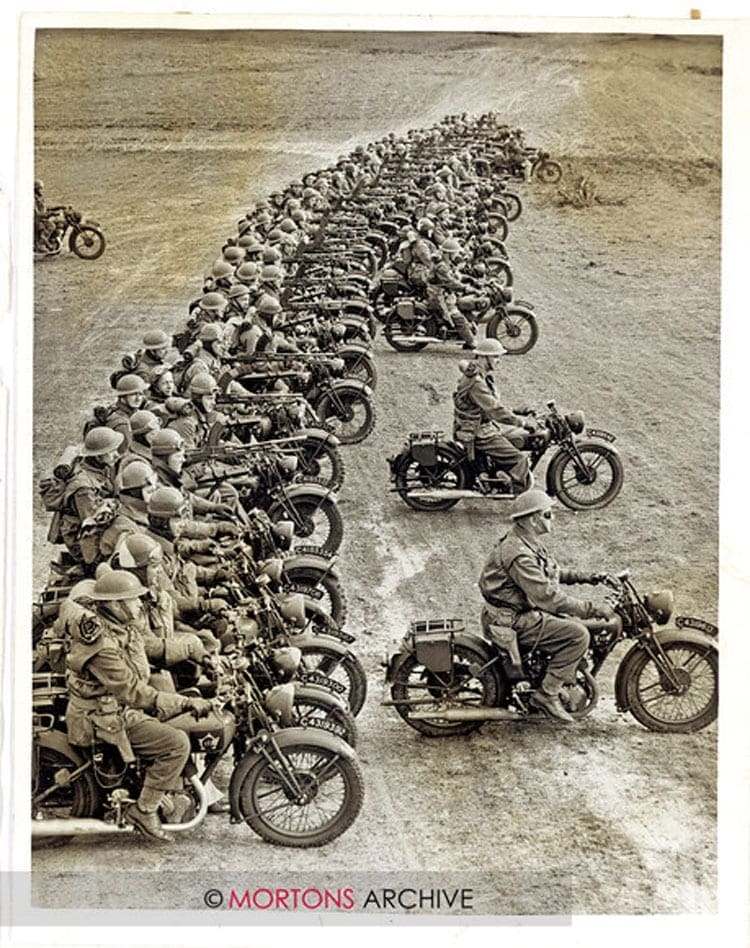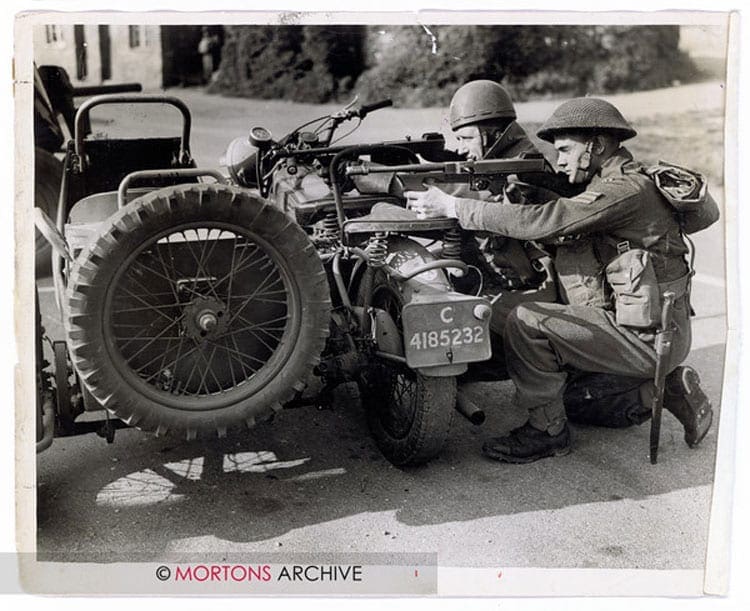We’ve delved into the illustrious Mortons Archive to give you a glimpse into the use of Triumph and Norton motorcycles in the Second World War.
Triumph suffers with Coventry


At the outbreak of the Second World War, Triumph was riding a wave, with their single cylinder Tigers among the best and most attractive.
Between 1938 and 1941, around 10,000 side-valve 3SWs were supplied to the British military, replacing the 3S. In 1940, the Coventry-based factory supplied around 1,500 5SWs – but production was to end suddenly on the night of November 14, when Germany’s bombs reigned down in the single most concentrated attack on a British city in the war. The bombing claimed hundreds of lives, destroyed over 4,300 homes and damaged two-thirds of the city’s buildings, including the Triumph factory. As a result, a number of 3SWs, the first 50 of the 3TW model – a 350cc twin which Triumph had planned to produce in large numbers – plus tooling, plans and spares were destroyed.
Triumph moved its operation into an old foundry building in Warwick, from where it produced the 3HW model, which was based on the Tiger 80. Triumph eventually found a permanent new home at Meriden.
Norton’s 16H and Big 4


For a firm that was making 4000 machines in 1935, Norton was able to claim the supply of 100,000 motorcycles to the forces after the Second World War.
The models were the 16H and Big 4, which went to army, navy and air forces around the world. The 16H model chosen was the pre-1937 type. If, however, a post-1938 model had been chosen by the powers that be, they would have had the totally enclosed and fully lubricated valve gear.
The 16H model was supplied for 10 years in total. During the first two years of the war, it was the most popular military motorcycle. The Matchless G3L was to push the 16H back, although some continued on the front line.

Norton also supplied the Military Model 1, or Big 4 as it was to become more commonly known. With a 633cc sv engine, the machine featured drive to both the rear wheel and sidecar wheel. With the wheels locked, the outfit would only move in a straight line. The arrival of the all-round and capable American Jeep sealed the Big 4’s fate, and many wound up in the western desert towing bomb trains in Australia.
Though not as glamorous, the 16Hs were supplied in 1945 and continued well into the 1950s, with Norton becoming the second largest supplier of motorcycles to the British Army.
The images used in this article are available in high-resolution for commercial and personal use. If you’re interested in purchasing these images, or want to find out more about Mortons Archive, visit www.mortonsarchive.com





